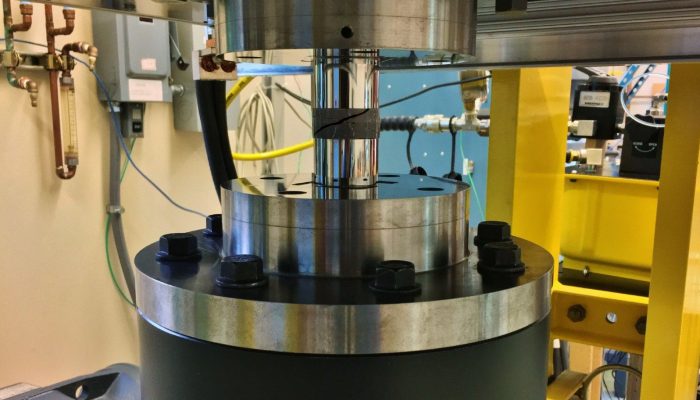Scholz (1998) is the “must-read” review article about rate- and state- variable laws of rock friction. The article is a robust introduction to the state-of-the art of the discipline at the end of the past century and should be considered of particular interest for students and/or early career scientists. In spite of its relative simplicity, rock mechanics unfortunately is still not taught universa ...[Read More]
Features from the Field: Sheath Folds
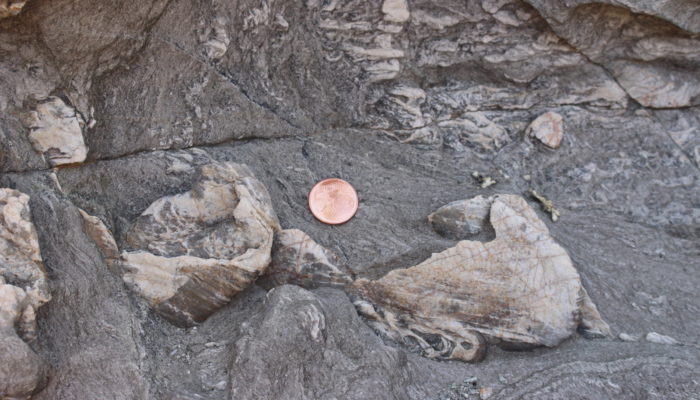
Shear zones are areas of intense deformation that localize the movement of one block of the crust with respect to another. In previous posts, we have seen that shear zones contain some very deformed rocks called mylonites, lineations that tell us the direction of movement, and useful kinematic indicators, such as S-C fabrics, that allow geologists to understand which way the rocks moved. However, ...[Read More]
Features from the Field: Stretching Lineations
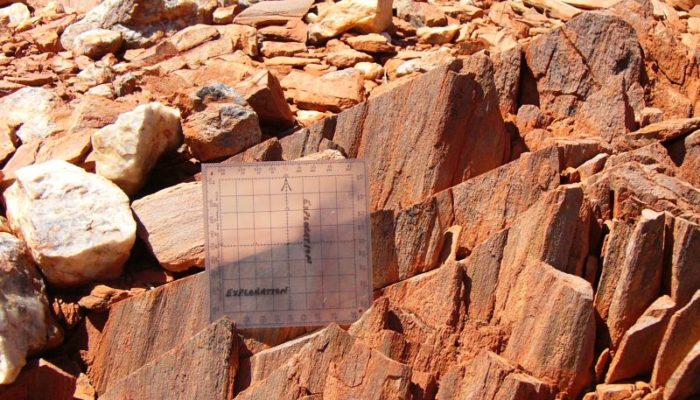
Deep beneath our feet, deformation of rocks at high temperature produces impressive structures such as shear zones, that localize the movement of two volumes of rock with respect to one another. Shear zones are strongly deformed bands with strongly foliated structures (i.e., with rocks that look like a pile of leaves) and kinematic indicators, such as S-C fabrics, that tell us geologists which way ...[Read More]
Features from the Field: Shear Zones and Mylonites
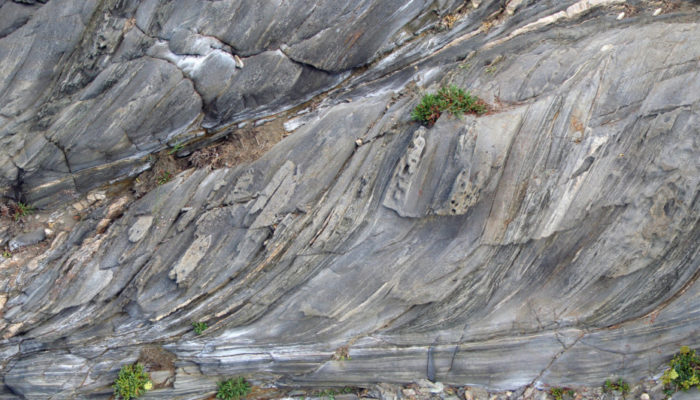
The San Andreas Fault in California, the Alpine Fault in New Zealand, or the Main Frontal Thrust in the Himalayas are some of the most famous and largest fault zones that accommodate the relative displacement between two adjacent crustal blocks. Such faults, however, represent only the shallower expression of something much bigger: a crustal shear zone. In the first 10 kilometers or so of the crus ...[Read More]
Features From the Field: Pencil Cleavage
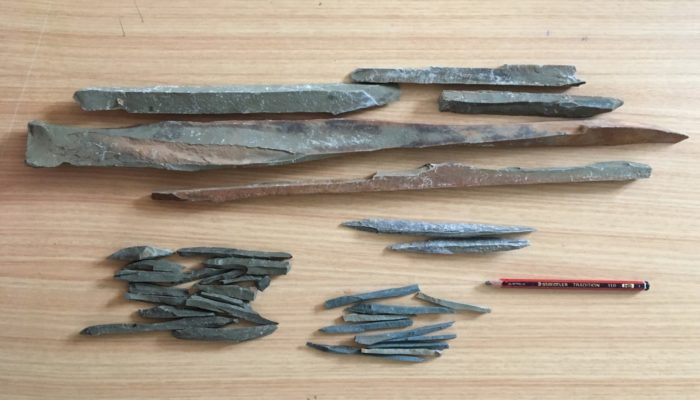
This edition of ‘Features from the field’ is brought to you by Sandra McLaren, a senior lecturer at the University of Melbourne. She will be talking about type of rock formation called “Pencil Cleavage” so called because it looks like pencils. Sandra even has a small collection of pencil/crayon shale which is the cover image of this post. I have seen quite a range of differ ...[Read More]
Features from the Field: Chevron Folds
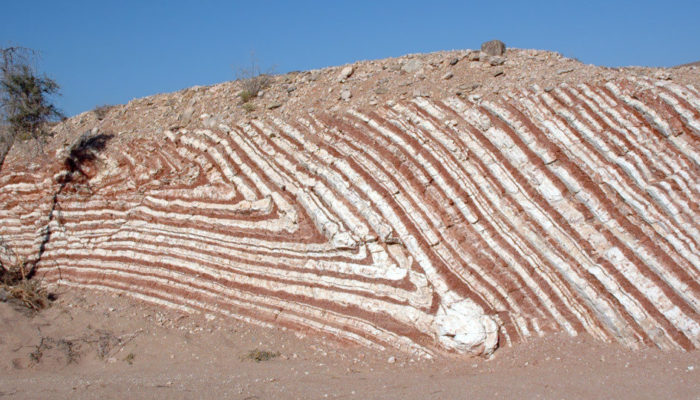
Folds are among the most strikingly beautiful structures we can observe in rocks. There are several ways folds may form in rocks. For instance, folds in sedimentary rocks may develop by liquefaction of soft sediments, but the most common way to produce folds – and also my favorite – is by deformation. When rocks are compressed by tectonic forces, layers (or foliations) bend and warp, p ...[Read More]
Features from the field: crenulation cleavage
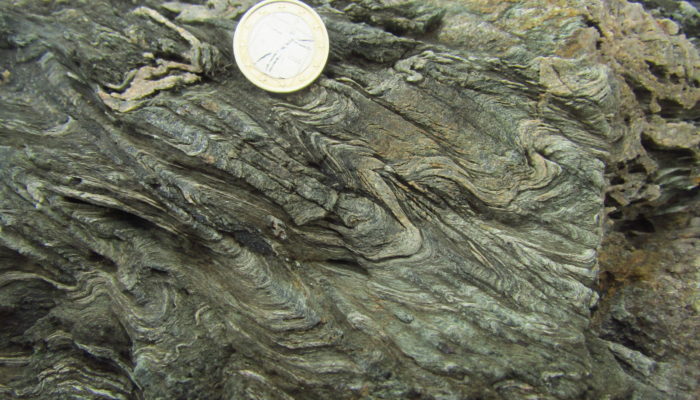
In one of the former episodes of the ‘Features from the field’ series we have talked about foliations, and how they develop when rocks are pushed together by the movement of tectonic plates. It is quite uncommon, however, that tectonic forces are active in the same direction for an unlimited period of time. The rule, rather than the exception, is that the orientation of tectonic forces ...[Read More]
Features from the field: Foliation
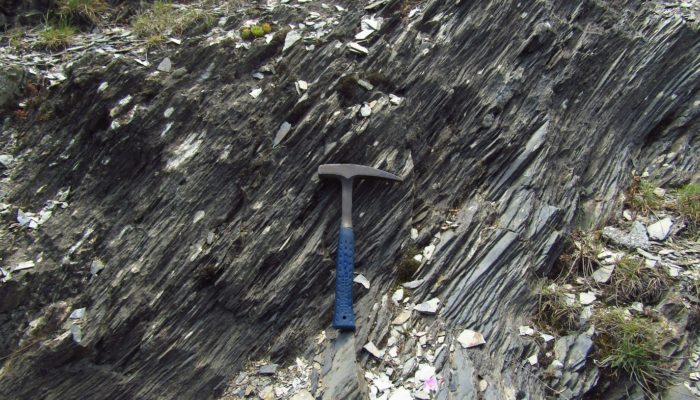
Have you ever walked on a mountain trail, passing past outcrops of rocks and noticed that many rocks appear to be split along a well-defined orientation? If you have, you might have seen one of the most important structures in metamorphic rocks – called foliation. The term ‘foliation’ derives from the Latin folium, meaning ‘leaf’. A rock with a foliation looks like a pile of R ...[Read More]
Minds over Methods: Making ultramylonites
“Summer break is over, which means we will continue with our Minds over Methods blogs! For this edition we invited Andrew Cross to write about his experiments with a new rock deformation device – the Large Volume Torsion (LVT) apparatus. Andrew is currently working as a Postdoctoral Research Associate in the Department of Earth and Planetary Sciences, Washington University in St. Louis, USA. ...[Read More]


